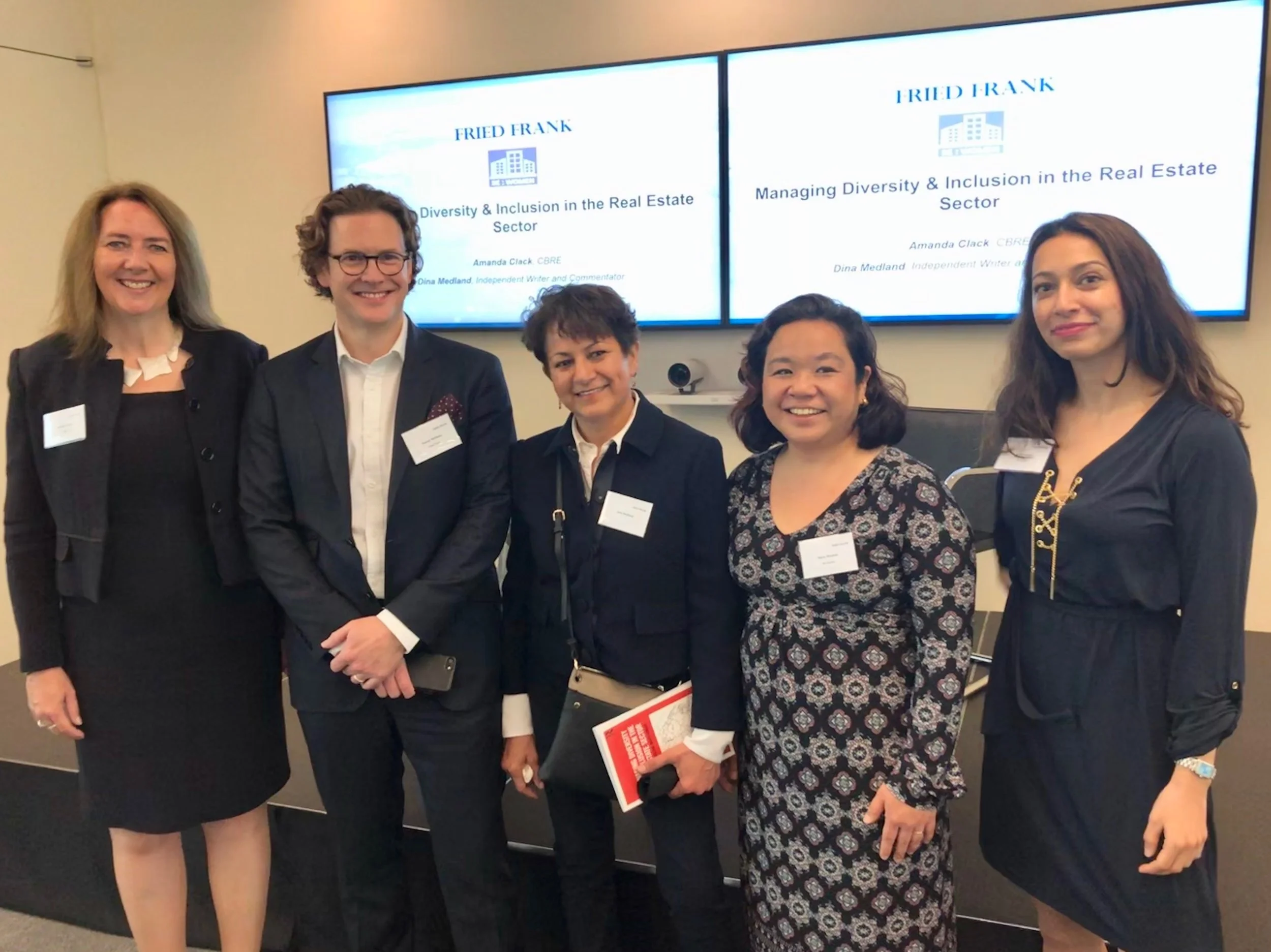Joining The Dots For The Property Sector On Diversity And Inclusion
It was a light-bulb moment when I opened my eyes on waking early before an event earlier this week. I had been asked to interview Amanda Clack, head of the strategic advisory board at CBRE UK, on a recently published book on diversity and inclusion in the real estate sector in front of an audience at Fried Frank, the law firm’s offices in London. I had never met her, but we had spoken on a call prior to the event. I had written a great deal about the need for diversity and inclusion for better business, but not about property. I suddenly realised I had missed a trick.
By all accounts from those involved, the event went extremely well. Due to the interest, I would like to share my ’light-bulb’ moment here, in this post, and expand a bit more on what I said in my introduction. Indulge me and keep reading.
When I was asked to write for Forbes in September 2013 (which I did for four years, and the archive is accessible online through this site or an internet search), I was asked to contribute under “Leadership”, writing about the subjects for which I had become known - corporate governance, ethics, boardrooms, gender equality, diversity and inclusion and the leadership needed for better business. But I was given free rein, and left completely to my own devices.
So, I followed my instincts and my intellectual curiosity took me quickly to the growing importance of environmental, societal and governance (ESG) concerns and risk, to sustainability, to the interest expressed there by institutional investors, to climate change and growing public concern, to the rising tide of awareness of the need for more accountability from business on all these fronts and also to the urgent need for non-financial reporting and climate-related disclosure. In fact, when the FSB TCFD was first launched, I was one of the few journalists to cover it, on Forbes, which meant that the pieces featured on the website, now full of media coverage.
But why did my brain never take me to the sector that embraces property, real estate, construction, and the built environment ?
Partly, I suspect, because by the time I stopped writing for Forbes, this all-encompassing sector hadn’t quite woken itself up from those doldrums of being all-white, male and extremely stale and was nowhere on my radar. Mlilennials, however, their values and their choices as human beings and consumers, were very much so.
As someone who is fascinated with technology, I also wrote a great deal about UK business, its attitudes to digital transformation, and whether technological transformation required a new kind of leadership.
Enough links. Yes, it’s doing my head in as well - but it saves time.
The point is, if you join the dots, the real estate sector brings together all these disparate themes on a changing environment amidst the need for serious innovation in business in a UK still struggling with Brexit after three years, and in a state of paralysis. The real estate sector is overwhelmingly pale, male and stale. It needs to step forward to all these challenges with better diversity and inclusion.
We now call it a ‘built environment’ and that embraces choice, ie we build it, our working and living environments. They need to be sustainable, they need to be appealing for the young, they need to be conducive to flexible working with the incorporation of secure technology and in the search for better gender equality and balance in business, and they need to be alluring for the younger talent required to inspire them, a talent stream that is increasingly choosy about where it wants to work.
'“As of 2018, 145 of RICS qualified members were female, and 245 were graduates and trainees - however, in areas such as quantity surveying or construction more broadly, this figure was well below 6%.” That snippet is from p 20 of the book, Managing Diversity And Inclusion In The Real Estate Sector. There are plenty more to give you the picture. But the real picture of potential comes from reading Chapter 7 - and I don’t believe I have ever recommended a book on this blog. Read it.
Also, if you are still talking about ‘work-life balance’, you might want to rethink. The younger generation wants life - and work will have to fit in the balance. It’s time to think of Diversity and Inclusion as a necessity, rather than spending time making a ‘business case’ for it. It seems to me that in a multi-cultural, multi-ethnic United Kingdom facing the much-lauded Fourth Industrial Revolution, no matter how much politicians of all hues try to deny or change reality, businesses from retail to financial services to real estate know that their survival depends on adapting to the times.
As an oldie (and in the UK we urgently need to be less ageist and embrace cognitive diversity/talent at all ends of the age spectrum), I am impatient with businesses that are not agile and still mired in the trappings of bureaucracy. So if I can feel that way - and choose how to spend the rest of my working life, just imagine the challenge the real estate sector faces attracting someone thirty years younger. It’s a good thing that it seems to have woken up, judging by this week’s event.
Cover Image credit : Spencer Dahl on Unsplash
Me at the event with the book at Fried Frank, London June 12, 2019 Image courtesy ING Media
L to R Amanda Clack CBRE UK, Patrick Williams Fried Frank, Me, Marie Wiedner RE Women and Cambridge Finance, Anouk Khan RE Women June 12, 2019 London Image courtesy ING Media








